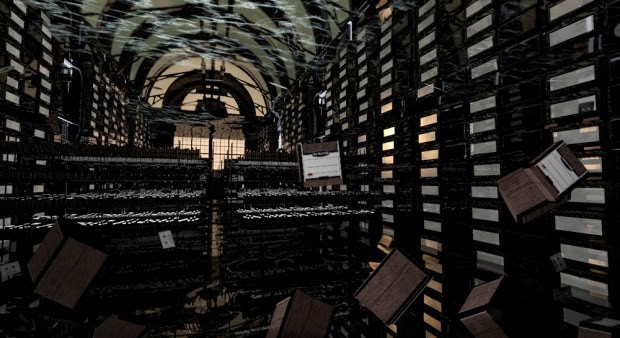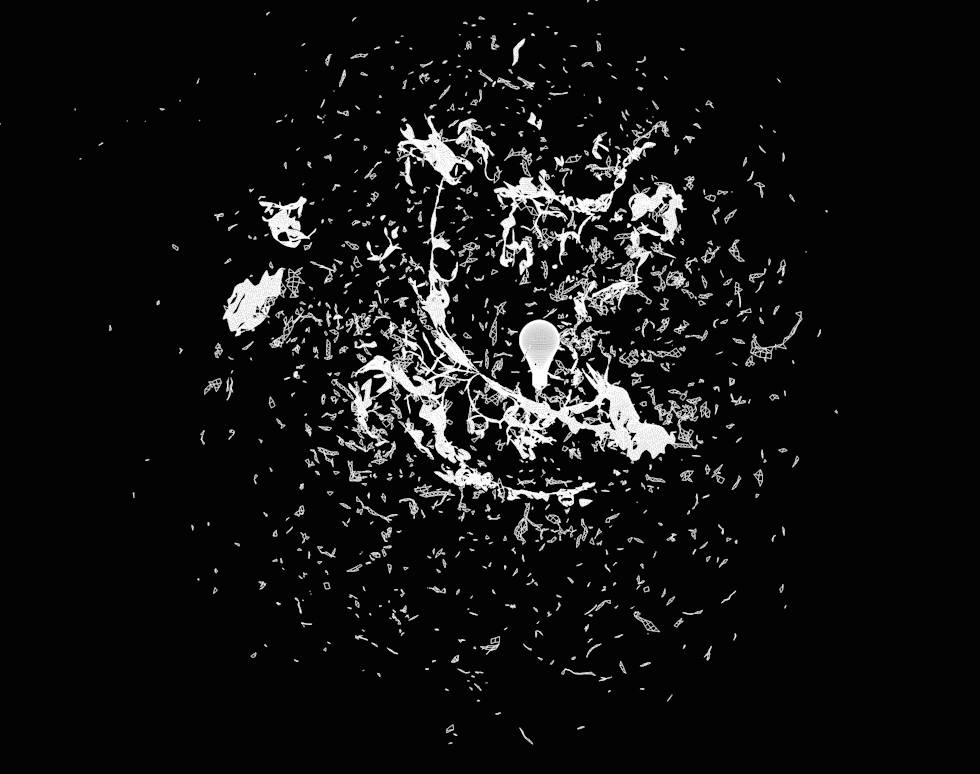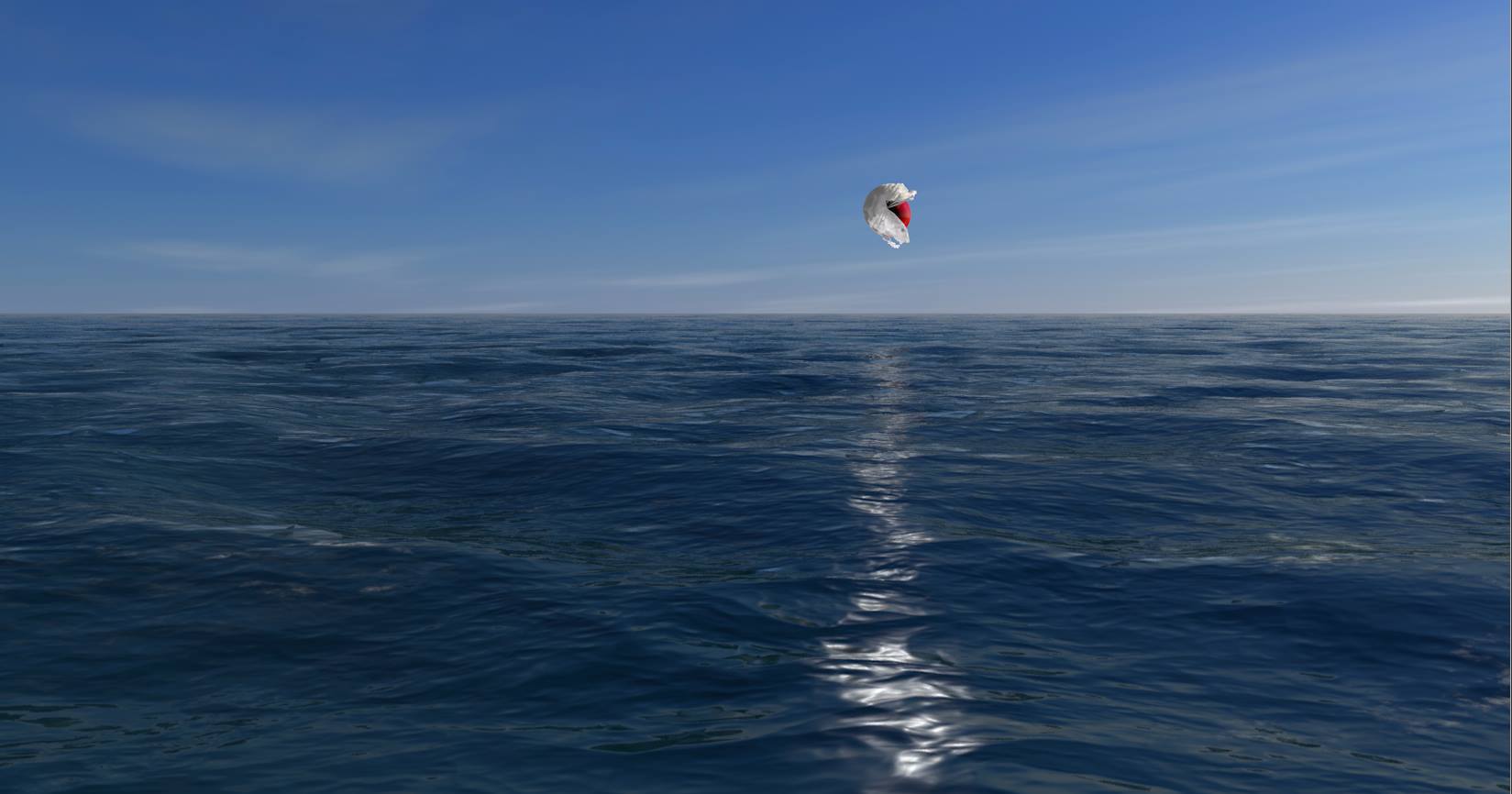Dredging a Wake, 2014





A solo exhibition at the Art Gallery of Hamilton entitled Dredging a Wake, which drew upon invisible forces to contemplate the transmission and storage of information in both aging and burgeoning technologies. The exhibition was comprised of three large-scale installations, Doldrums, Precipice, and Doline. Precipice and Doldrums were remounted in 2018; Precipice in InterAction, a survey of Canadian interactive art curated by Jane Tingley and Alain Thibault; and Doldrums at Beton7, in conjunction with 'Platforms Project: Independent Art Fair’, Athens, curated by Artemis Potamianou. Doldrums is a two-channel stereoscopic video installation, in which animated projections and reflective surfaces send light refractions across the gallery and onto the viewer’s body, merging the two signals in the center of the gallery space. A 3D animation of the moon above a calm ocean contrasts with its wire-frame mirror image projected on the opposing wall. The wire-frame animation is stereoscopic, made viewable with active shutter glasses provided by the gallery. The moon suddenly rips open, as though it was made of delicate cloth, shredding into red, green, and blue (RGB) tattered pieces that are carried off in the currents of a gentle breeze, revealing an incandescent light bulb at its core. The camera slowly approaches the bulb, zooming into the filament, to then travel down imagined conduits into fantastical abstractions of waves and particles that imaginatively visualize the flow of information. The mirror refractions cast caustic imagery across the gallery floor and walls, where the colour of the two-dimensional signal merges with the line of the wireframe signal, a nexus of colour and form.
Doldrums contemplates the transmission of information through light, and makes reference to McLuhan’s use of the light bulb as a means to explain his concept, the medium is the message. The emanations of the electric light are devoid of content (‘unless it is used to spell out some verbal ad or a name’) in comparison to other mediums, such as television or the printed word, yet creates environments otherwise obscured by darkness, altering the social sphere. Content is made legible by all that is touched by the illumination of the electric light, and in this, “The electric light is pure information.”
In Precipice, the transmission, storage and access of information is imagined as a current to be traversed and navigated. The installation explores the stewardship of analogue and digital archives in which many of the activities of our public and private lives are recorded. Drawing upon imagery of an oceanic abyss, a video projection is mapped onto a nautilus structure that serves as a rear-screen projection, creating an immersive space where paper documents, floppy disks, cds, banker boxes, and cassettes float as silt in a watery depth. In the centre of this space, a single antique office chair is illuminated, presenting an invitation for the viewer to sit. When seated, a projected figure swims across the perimeter of the space, displacing the paper documents and stationary debris in a swirling eddy. The chair, automated to rotate, aligns the viewer’s gaze with the swimmer’s movement. The swimmer becomes lost in, or a part of, the eddying documents just as the chair returns to its original position. Outside of the nautilus structure, the four walls of the gallery are illuminated with large-scale projections of an immense black, glossy archive, that is either submerged, or devoid of gravity, in which the same archival items that are projected onto the nautilus screen drift in invisible currents. Each of the four projections reveal a quadrant of the architecture, and are in a steady, constant rotation on the y axis, creating a vertiginous environment of shifting dimensions within the gallery space. The connection to water and weightlessness in these works speaks to the increasingly immersive transmission of information, how we move through it in our physical bodies and as our digital selves. We retrieve data through various devices as we move through it, producing new records as we do so, detailing our location in time and space, as though each documented action produces an eddy, altering the current's flow, temporarily shaping a responsive, relational field. Sadie Plant makes use of watery metaphor to describe the nonlinearity of information, writing “…floods of data which have burst the banks of traditional modes of arranging and retrieving information and are now leaking through the covers of articles and books, seeping past the boundaries of the old disciplines, overflowing all the classifications and orders of libraries, schools, and universities. And the sheer weight of data with which the late twentieth century finds itself awash is only the beginning of the pressures under which traditional media are buckling.”
Again referencing a natural abyss, Doline (a phenomenon more commonly referred to as a sinkhole) physically manifested the animated elements seen in Precipice as kinetic sculpture. In this, readymade objects of obsolete technologies, such as VCRs and Beta decks, and items that house and store media, such as cassettes, filing cabinets, and bankers boxes, are cut at an angle and slowly spin on the floor of the gallery, as though semi-submerged in a body of water, caught in an eddy. The installation is accompanied by the ominous and haunting 1964 sound collage Falling, from The Dreams, a four-part radio series by electronic musician and composer Delia Derbyshire and poet Barry Bermange, wherein people relay their dreams of falling into an abyss. The items floating through the water in Precipice and Doline speak to the maintenance of aging technologies and media, how we house the immaterial, what is chosen to be preserved through translation or conversion, and what is left behind.